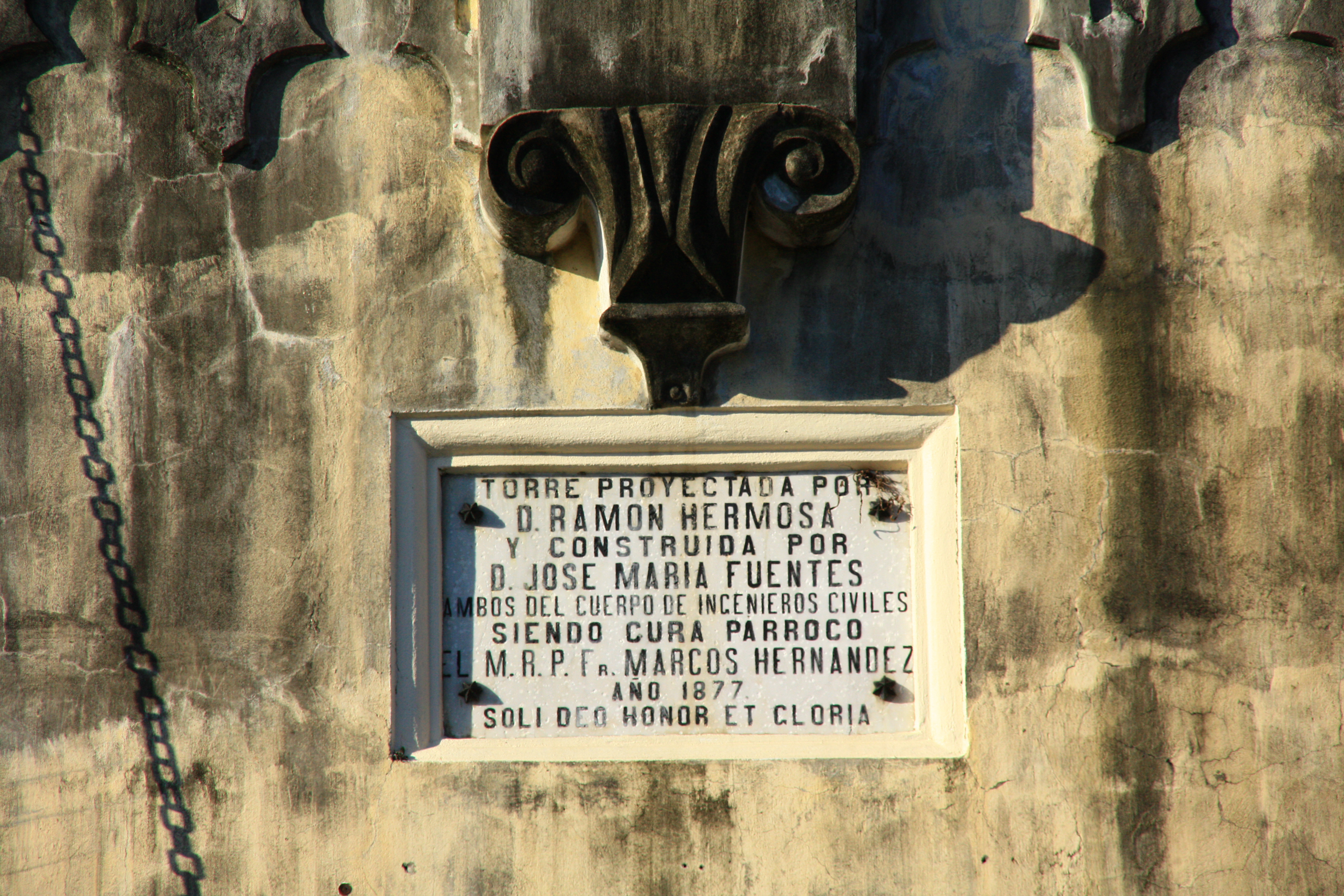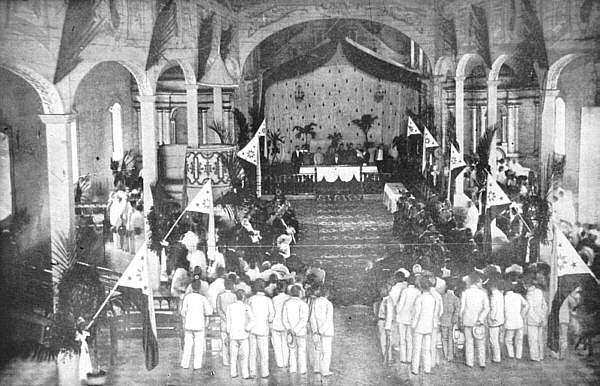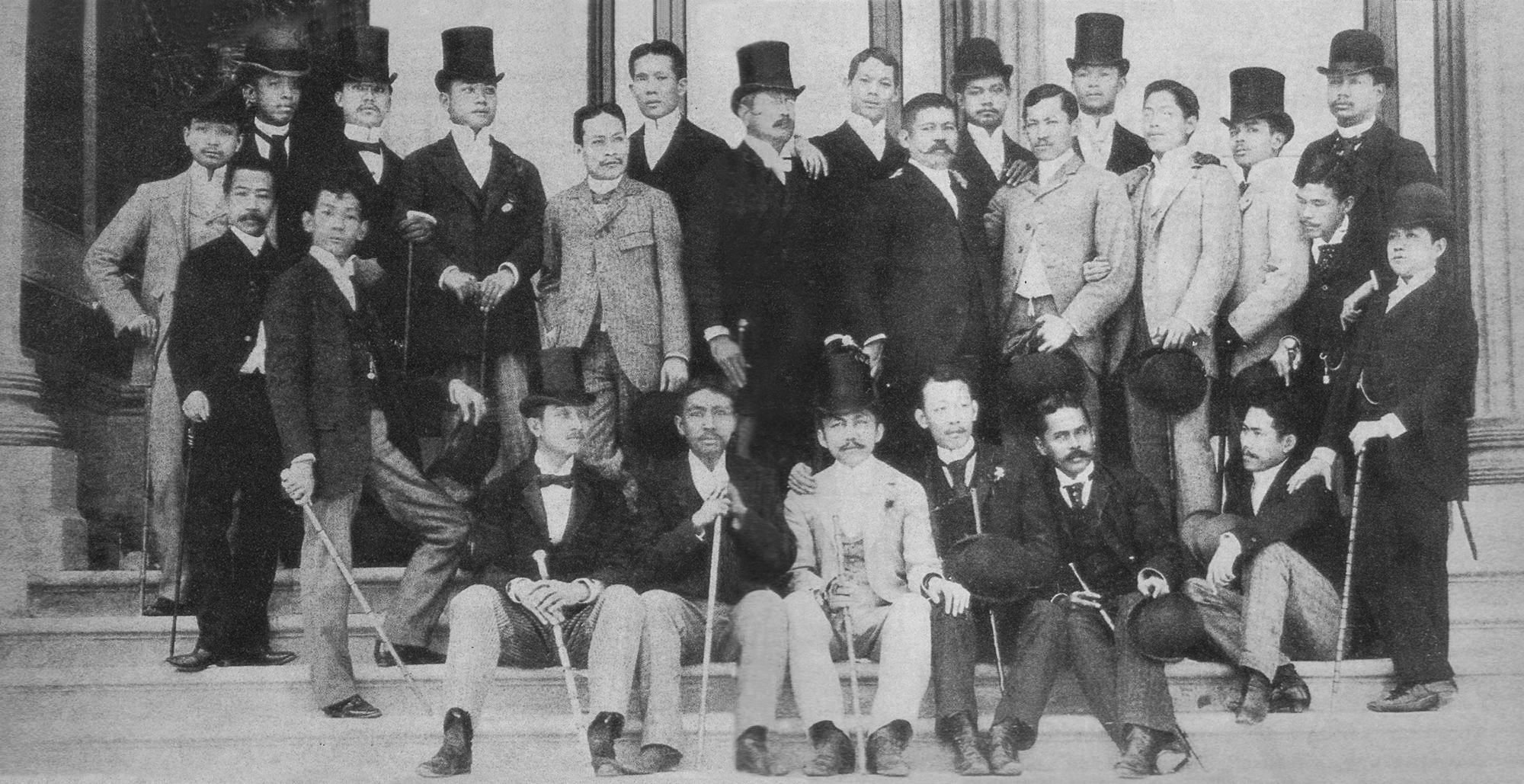|
Our Lady Of Assumption Church (Bulakan)
The Our Lady of Assumption Parish Church ( Sp., ''Iglesia Parroquial de Nuestra Señora de la Asuncion''), commonly known as the Bulakan Church, is a 19th-century Neo-Byzantine- Romanesque stone church located at Brgy. San Jose, in the Municipality of Bulakan (formerly spelled as ''Bulacan''), Bulacan province, Philippines. It is one of the parishes of the Roman Catholic Diocese of Malolos under the Vicariate of the Immaculate Conception. The church was declared ''Marked Historical Structure'' of the Philippines in 2007 by the National Historical Institute, the precursor of the National Historical Commission of the Philippines. A historical marker bearing a brief history of the church was installed by the commission. History Parish church The parish and the first church was established by the Augustinian Fathers in 1575 as a sub-parish of Tondo. In 1578, the town of Bulakan was proclaimed a separate parish from Tondo. According to the historical marker, during the British invas ... [...More Info...] [...Related Items...] OR: [Wikipedia] [Google] [Baidu] |
Bulakan, Bulacan
Bulakan, officially the Municipality of Bulakan ( tgl, Bayan ng Bulakan), is a 1st class municipality in the province of Bulacan, Philippines. According to the 2020 census, it has a population of 81,232 people. It is north of Manila. Bulakan, which is one of the oldest towns in the Philippines, became the ''encomienda'' or capital of the '' Provincia de la Pampanga'', and later became the first capital of the Province of Bulacan before it was moved to Malolos shortly after the American occupation. With regards to whether to use the letters "c" or "k" to refer to the municipality of Bulakan, the New Provincial Administrative Code of Bulacan (Ordinance no. C-004) of 2007 states on Chapter 2, Section 15 that the word "Bulakan" stands for the municipality and first capital of the province while "Bulacan" refers to the province itself. Etymology The name "Bulakan" is derived from the Tagalog word "bulak", which means "cotton". The town was named Bulacan due to the abundance of ... [...More Info...] [...Related Items...] OR: [Wikipedia] [Google] [Baidu] |
Bulacan
Bulacan, officially the Province of Bulacan ( tl, Lalawigan ng Bulacan), is a province in the Philippines located in the Central Luzon region. Its capital is the city of Malolos. Bulacan was established on August 15, 1578, and part of the Metro Luzon Urban Beltway Super Region. It has 569 barangays in 20 municipalities and four component cities (Baliuag, Malolos the provincial capital, Meycauayan, and San Jose del Monte). Bulacan is located immediately north of Metro Manila. Bordering Bulacan are the provinces of Pampanga to the west, Nueva Ecija to the north, Aurora and Quezon to the east, and Metro Manila and Rizal to the south. Bulacan also lies on the north-eastern shore of Manila Bay. In the 2020 census, Bulacan had a population of 3,708,890 people, the most populous in Central Luzon and the third most populous in the Philippines, after Cebu and Cavite. Bulacan's most populated city is San Jose del Monte, the most populated municipality is Santa Maria while the ... [...More Info...] [...Related Items...] OR: [Wikipedia] [Google] [Baidu] |
Corbel
In architecture, a corbel is a structural piece of stone, wood or metal jutting from a wall to carry a superincumbent weight, a type of bracket. A corbel is a solid piece of material in the wall, whereas a console is a piece applied to the structure. A piece of timber projecting in the same way was called a "tassel" or a "bragger" in England. The technique of corbelling, where rows of corbels deeply keyed inside a wall support a projecting wall or parapet, has been used since Neolithic (New Stone Age) times. It is common in medieval architecture and in the Scottish baronial style as well as in the vocabulary of classical architecture, such as the modillions of a Corinthian cornice. The corbel arch and corbel vault use the technique systematically to make openings in walls and to form ceilings. These are found in the early architecture of most cultures, from Eurasia to Pre-Columbian architecture. A console is more specifically an "S"-shaped scroll bracket in the classical ... [...More Info...] [...Related Items...] OR: [Wikipedia] [Google] [Baidu] |
Plinth
A pedestal (from French ''piédestal'', Italian ''piedistallo'' 'foot of a stall') or plinth is a support at the bottom of a statue, vase, column, or certain altars. Smaller pedestals, especially if round in shape, may be called socles. In civil engineering, it is also called ''basement''. The minimum height of the plinth is usually kept as 45 cm (for buildings). It transmits loads from superstructure to the substructure and acts as the retaining wall for the filling inside the plinth or raised floor. In sculpting, the terms base, plinth, and pedestal are defined according to their subtle differences. A base is defined as a large mass that supports the sculpture from below. A plinth is defined as a flat and planar support which separates the sculpture from the environment. A pedestal, on the other hand, is defined as a shaft-like form that raises the sculpture and separates it from the base. An elevated pedestal or plinth that bears a statue, and which is raised from ... [...More Info...] [...Related Items...] OR: [Wikipedia] [Google] [Baidu] |
Propaganda Movement
The Propaganda Movement encompassed the activities of a group of Filipinos who called for political reforms in their land in the late 19th century, and produced books, leaflets, and newspaper articles to educate others about their goals and issues they were trying to solve. They were active approximately from 1880 to 1898, and especially between 1880 and 1895, before the Philippine Revolution began. Prominent members included José Rizal, author of novels '' Noli Me Tángere'' and '' El filibusterismo'', and essays; Graciano López Jaena, publisher of ''La Solidaridad'', the movement's principal organ; Mariano Ponce, the organization's secretary, and Marcelo H. del Pilar. Specifically, the Propagandists aims were the following: * Reinstate the former representation of the Philippines in the Cortes Generales or Spanish Parliament * Secularize the clergy (i.e. use secular or diocesan priest rather than clergy from a religious order) * Legalize Spanish and Filipino equality ... [...More Info...] [...Related Items...] OR: [Wikipedia] [Google] [Baidu] |
Marcelo H
Marcelo is a given name, the Spanish and Portuguese form of Marcellus. The Italian version of the name is Marcello, differing in having an additional "l". Marcelo may refer to: *Marcelo Costa de Andrade (born 1967), Brazilian serial killer, rapist, and necrophile *Marcelinho Carioca (Marcelo Pereira Surcin born 1971 in RJ), Brazilian international midfielder in 1990s *Marcelinho Machado (born 1975), Brazilian professional basketball player * Marcelinho Paraíba (Marcelo dos Santos b. 1975 in Paraíba state), Brazilian international midfielder * Marcelinho Paulista (Marcelo José de Souza born 1973 in SP state), Brazilian youth international in 1996 Olympics *Marcelo (footballer, born January 1987), Brazilian footballer *Marcelo (footballer, born May 1987), Brazilian footballer, who played for Lyon * Marcelo (footballer, born 1988), Brazilian footballer, who played for Real Madrid * Marcelo (footballer, born 1989), Brazilian footballer, who plays for Paços Ferreira * Marcelo Arria ... [...More Info...] [...Related Items...] OR: [Wikipedia] [Google] [Baidu] |
Gregorio Del Pilar
Gregorio Hilario del Pilar y Sempio (; ; November 14, 1875 – December 2, 1899) was a Filipinos, Filipino general of the Philippine Revolutionary Army during the Philippine–American War. As one of the youngest generals in the Revolutionary Army, he was known for the successful assault on the Spanish barracks in the municipality of Raid on Paombong, Paombong, his victory on the first phase Battle of Quingua and his last stand at the Battle of Tirad Pass during the Philippine–American War. Because of his youth, he became known as the "Boy General". He was also known as a ladies man and was described by National Artist of the Philippines, National Artist for Literature Nick Joaquin as the "Lord Byron, Byron of Bulacan". Early life and education Born on November 14, 1875 to Fernando H. del Pilar and Felipa Sempio of Bulacan, Bulacan, the fifth among six siblings. His siblings were María de la Paz del Pilar (b.1865), Andrea del Pilar (b. 1866), Pablo H. del Pilar (b. 1869) ... [...More Info...] [...Related Items...] OR: [Wikipedia] [Google] [Baidu] |
JC Bulakan 13
JC may refer to: Airlines * JC International Airlines, Cambodia * Japan Air Commuter (IATA code: JC) *JAL Express (1998–2014; IATA: JC), Japan * Rocky Mountain Airways (1965–1991; IATA: JC), United States Arts and media * "JC" (song), a 1996 song by Powderfinger * ''J.C.'' (film), a 1972 American action film *''The Jewish Chronicle'', a national British Jewish newspaper People *Jesus Christ *A shortening for French given name Jean-Claude In arts and entertainment *JC (singer) (born 1998), Chinese singer *JC Chasez (born 1976), American musician *JC de Vera (born 1986), Filipino actor * JC Santos (born 1988), Filipino actor *J. C. Schütz (born 1976), Swedish singer, songwriter musician *James Cameron (born 1954), Canadian film director and writer * Jeassy (1936–2001), Indian film director and actor *John Campbell-Mac (born 1973), British actor and producer In politics and government *J. C. Watts (born 1957), American politician and former professional Canadian football p ... [...More Info...] [...Related Items...] OR: [Wikipedia] [Google] [Baidu] |
Luzon Island
Luzon (; ) is the largest and most populous island in the Philippines. Located in the northern portion of the Philippines archipelago, it is the economic and political center of the nation, being home to the country's capital city, Manila, as well as Quezon City, the country's most populous city. With a population of 64 million , it contains 52.5% of the country's total population and is the fourth most populous island in the world. It is the 15th largest island in the world by land area. ''Luzon'' may also refer to one of the three primary island groups in the country. In this usage, it includes the Luzon mainland, the Batanes and Babuyan groups of islands to the north, Polillo Islands to the east, and the outlying islands of Catanduanes, Marinduque and Mindoro, among others, to the south. The islands of Masbate, Palawan and Romblon are also included, although these three are sometimes grouped with another of the island groups, the Visayas. Etymology The name ''Lu ... [...More Info...] [...Related Items...] OR: [Wikipedia] [Google] [Baidu] |
1880 Luzon Earthquakes
The earthquakes of July 1880 in Luzon, the largest island of the Philippines, were one of the most destructive tremors on record in the history of the country. The shocks continued, with greater or less interruption, from the 14th to the 25th of the month, highlighted by three violent shaking events, which destroyed churches and other buildings, producing loss of life."American Journal of Science – Art.V. The earthquake of the Philippine Islands, July 1880" pp. 52–57. Coinciding with the tectonic activity was an increase in volcanic activity in Taal Volcano in southwestern Luzon. The Luzon ... [...More Info...] [...Related Items...] OR: [Wikipedia] [Google] [Baidu] |



.jpg)
